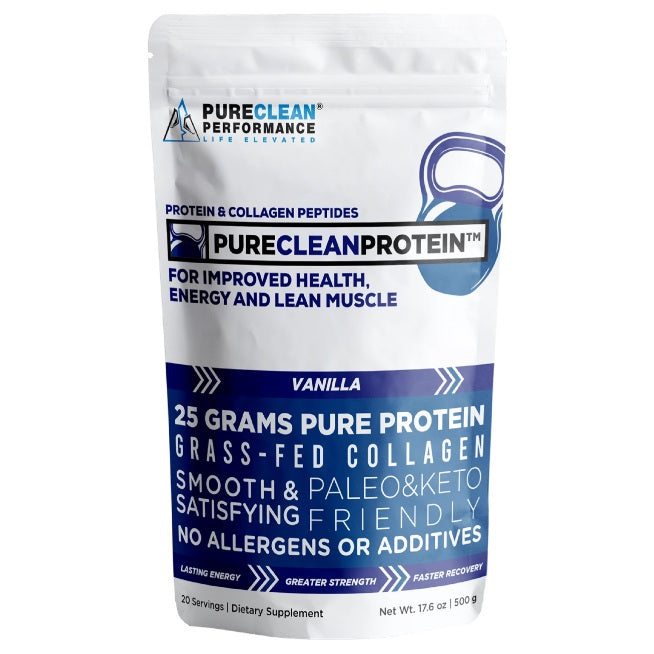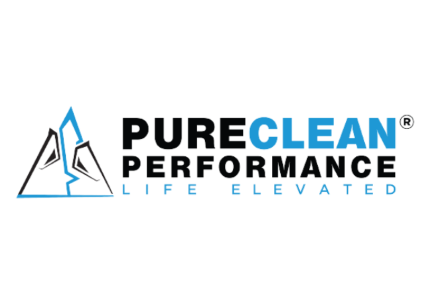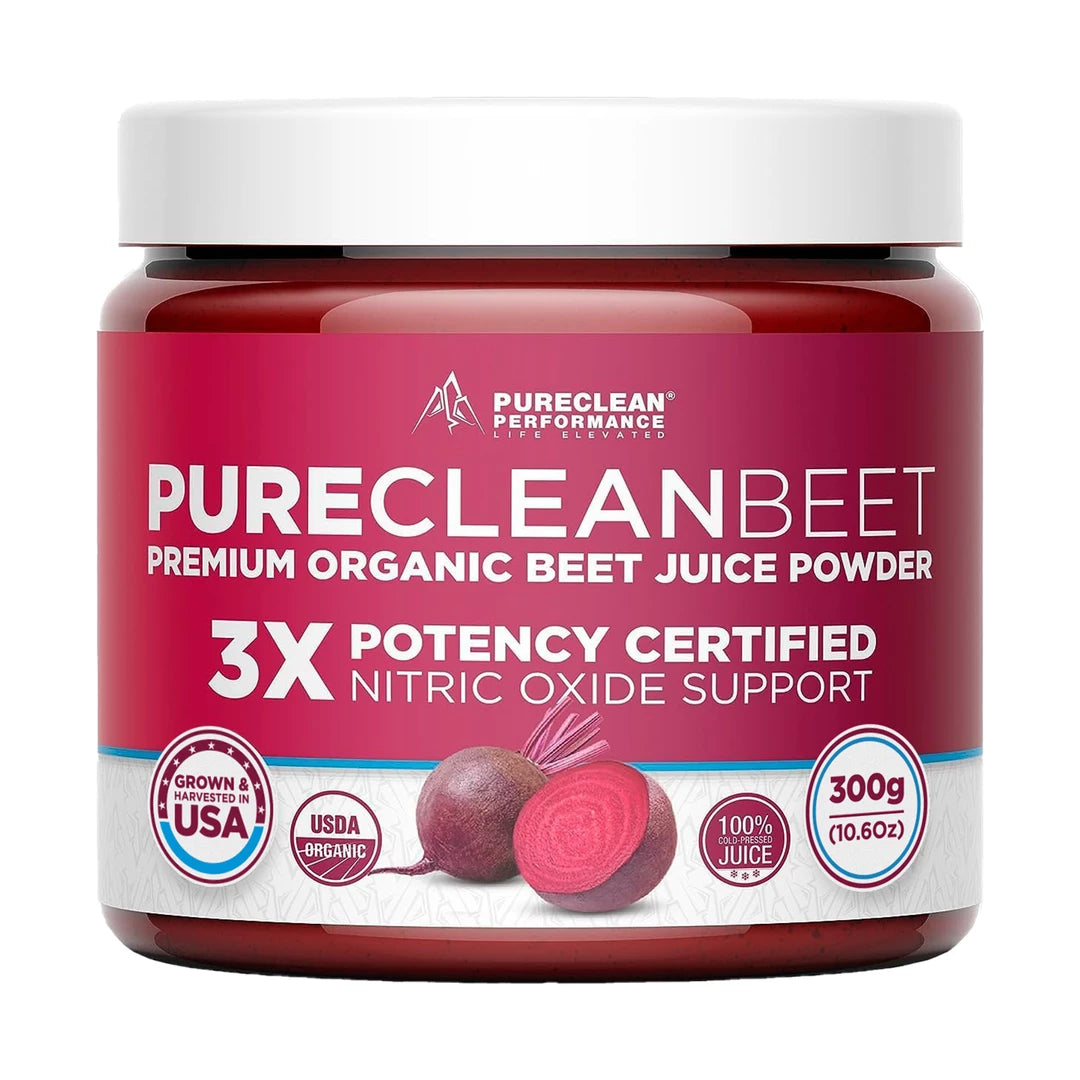The Benefits of Glycine & Dr. Cohen's Secret Protein Longevity Shake
Glycine is an amino acid that plays a crucial role in various physiological processes. Its benefits are wide-ranging and can contribute to overall health and well-being.
Here are 10 benefits of glycine:
1. Enhanced sleep quality: Glycine has been shown to improve the quality of sleep by promoting a deeper and more restful sleep state.
2. Reduced anxiety and stress: Glycine acts as an inhibitory neurotransmitter in the brain, helping to balance excitatory neurotransmitters and potentially reducing feelings of anxiety and stress.
3. Improved cognitive function: Glycine assists in maintaining optimal brain function, supporting memory, concentration, and overall cognitive performance.
4. Joint health support: Glycine promotes the synthesis of collagen, a key component of healthy joints, cartilage, and tendons, thus supporting joint health and mobility.
5. Enhanced muscle growth and repair: As a building block for proteins, glycine supports muscle growth and repair, making it a valuable supplement for athletes and those engaged in regular exercise.
6. Liver detoxification support: Glycine aids in the detoxification process by supporting the liver in removing harmful substances from the body.
7. Anti-inflammatory effects: Glycine possesses anti-inflammatory properties, which can help reduce inflammation in the body and potentially alleviate symptoms associated with conditions such as arthritis.
8. Improved digestive health: Glycine can assist in maintaining a healthy gut lining, promoting optimal digestion and nutrient absorption.
9. Cardiovascular support: Glycine has been shown to have a positive impact on heart health by improving blood flow, reducing the risk of cardiovascular diseases, and supporting overall cardiovascular function.
10. Improved skin health: Glycine plays a role in the production of collagen and elastin, important proteins for maintaining healthy and youthful-looking skin.
These are just some of the many benefits that glycine can offer. Incorporating glycine-rich foods or considering glycine supplementation may contribute to improved health and well-being in multiple areas of life.
What is Dr. Cohen secret protein longevity shake?
PureClean Protein Unflavored & PureClean Protein Vanilla are powdered supplements that contains 20g of glycine per 100g of powder because they both contain collagen. This translates to 5g of glycine per 25g of protein.
To enhance its benefits, Dr. Cohen personally includes a longevity powder blend that serves as a sweetener and offers additional advantages.
The longevity powder blend consists of various ingredients that not only provide glycine but also support NAD with ribose and B3, as well as copper utilization with taurine. The blend includes 3g of glycine, 1g of ribose, 1g of xylitol, 0.666g of taurine, and 50mg of niacinamide. This blend is designed to be consumed three times daily.
Ribose and B3 work together to support NAD levels in the body. NAD plays a crucial role in numerous cellular processes, including energy production and DNA repair.
Taurine, on the other hand, is a sulfur amino acid that aids in liver copper metabolism. It is essential for the synthesis of bile and bile salts, which are involved in the digestion of fatty acids and the absorption of retinol. Retinol, in turn, optimizes the function of ceruloplasmin.
Notably, taurine has been found to have a significant impact on copper utilization, which is an important factor for overall health. Unlike some other nutrients, taurine cannot be obtained from plants and tends to decline as we age. Recent studies suggest that taurine may have potential longevity effects, supporting a longer and healthier life. Taurine also calms the stress response by facilitating the production of the neurotransmitter GABA. In ideal situations, we make at least some of our own taurine, but a body lacking key minerals may not produce enough, and children require it as they grow.
For more information on the potential benefits of taurine, you can refer to the following source: ‘Effects and Mechanisms of Taurine as a Therapeutic Agent’, Schaffer and Kim, 2018. This research highlights the various aspects in which taurine may contribute to longevity.
Overall, the combination of glycine, ribose, xylitol, taurine, and niacinamide in PCProtein Unflavored & Vanilla, along with its support for NAD and copper utilization, makes it a valuable supplement that promotes both vitality and longevity.
Taurine has only part of the RCP/MLP program for copper utiliaztion. It can not be otained from plants and it declines with age. Recent studies suggest there may be a longevity efffect.
What are the top sources of glycine?
It is an important amino acid known for its various physiological functions, can be obtained from several dietary sources. However, it is essential to note that certain proteins, such as whey protein or vegan proteins, do not contain glycine as they lack collagen.
When it comes to obtaining glycine, one protein source stands out - PureClean Protein. PureClean Protein is a high-quality protein that not only offers an excellent amino acid profile but also serves as a reliable source of glycine. This protein supplement can be a great choice for individuals looking to increase their glycine intake while meeting their protein requirements.
In contrast to other protein powder sources, PureClean Protein offers a unique advantage by containing collagen. Collagen is a primary source of glycine, which plays a crucial role in the synthesis of important molecules within the body. The presence of glycine in PureClean Protein makes it an ideal option for those seeking to supplement their diet with this essential amino acid. Moreover, PureClean Protein goes through rigorous processing and purification methods, ensuring that the protein is free from any unwanted contaminants. This meticulous approach ensures that the protein is of the highest quality, allowing individuals to reap the benefits of glycine without any concerns about impurities.
Adding PureClean Protein to your diet can not only provide you with a sufficient protein intake but also ensure that you are incorporating glycine, a fundamental amino acid, into your daily nutritional regimen. By choosing this reliable protein source, you can support various physiological functions associated with glycine, promoting overall health and well-being.
We also recommend getting glycine and taurine from foods as much as possible. It is highest in seafood, red meats and organ meats, and the dark meat of chicken and turkey, with smaller amounts in dairy. We can also consume cysteine in foods such as eggs, which we then use to make taurine. Those who take magnesium taurate are already getting a source of taurine.
BONUS: How Glycine Fights Viruses from Dr. Mercola
Analysis by Dr. Joseph Mercola November 27, 2023
Collagen accounts for about 30% of the total protein in your body; 28% of collagen, in
turn, is made up of the amino acid glycine
Glycine is the amino acid with the highest concentration in connective tissue. Its benefits
go far beyond connective tissue health as glycine has anti-inflammatory effects, acts as
a neurotransmitter, and plays an important role in the epigenetic regulation that drives
the aging process
Glycine helps protect against viruses by reinforcing the extracellular matrix, which acts
as a physical barrier to infectious agents such as bacteria, fungi and viruses
Most people need 8.5 to 10 grams more glycine than what their bodies can synthesize in
a day
To boost your glycine intake, either eat more collagen or gelatin-rich foods and take a
high-quality collagen or gelatin supplement, or supplement with pure glycine, which is
available in powder form and tends to be very affordable
• Has potent anti-inflammatory effects, in part by inhibiting activation of immune
cells and suppressing the production of proinflammatory cytokines, and in part by
inhibiting the consumption of nicotinamide adenine dinucleotide phosphate
hydrogen (NADPH), as detailed in this previous article.
• Plays an important role in the aging process. In some animal studies, diets
containing 8% to 12% glycine increased the median lifespan by as much as 28.4%.
According to previous research, glycine may even be responsible for the epigenetic
regulation that drives the aging process as a whole. It also induces autophagy, so
that renewal and regeneration of your damaged cells can take place.
• Is a precursor to glutathione, a powerful endogenous antioxidant that declines with
age.
• Acts as a neurotransmitter and may play an important role in depression. It’s also
been shown to alleviate neuroinflammation and protect against cognitive deficits in
mice with neurodegeneration.
• Helps prevent cancer by inhibiting the growth of blood vessels that feed tumors.
Glycine Protects Against Viral Infections
Interestingly, glycine also helps protect against viruses by reinforcing your extracellular
matrix, as evidenced in a 2021 study. Collagen, which is high in glycine, is the primary
protein of the extracellular matrix, which acts as a physical barrier against infectious
agents such as bacteria, viruses and fungi.
When you’re deficient in glycine, your extracellular matrix is weakened, thereby raising
the risk of viruses being able to proliferate through your tissues. Many infectious agents
secrete proteases that destroy collagen to facilitate their proliferation.
Glycine intake at the afore-mentioned dose
prevents the spread of viruses by strengthening the
extracellular matrix barriers against their advance.
Journal of Functional Foods January 2021”
Some viruses are also known to inhibit collagen synthesis, which has the same effect.
Making sure you have enough glycine in your system at all times can help prevent
viruses from destroying enough collagen to get inside your cells.
Another Mechanism to Explain Glycine’s Infection Protection
A 2020 study showed an antiviral mechanism for glycine in that it prevents for
formation of capsids. You probably didn’t know this, but viruses carry around an outer
shell of proteins called a capsid. This capsid acts like a lockpick in that it attaches to
and pries open the cell’s membrane it is seeking to infect.
The virus then hijacks the cell’s inner workings, forcing it to mass produce the virus’s
genetic material and construct many viral replicas. These capsids are like popcorn
kernels pushing away the lid of an overfilled pot: The new viruses explode through the
cell wall, and the cycle continues with more virus lockpicks on the loose.
Since glycine prevents the viruses from forming a capsid, they become unstable and
unable to infect other cells as they simply disintegrate without their capsid "shell."
Glycine Supplementation Is a Necessity
While your body does synthesize glycine, there’s a limit to how much your body can
make, and more than likely it falls far short of your requirements to perform all of its
essential functions. As explained by the authors:
"Glycine produced by human metabolism is much lower than the cell’s needs,
giving a general glycine deficiency of 10g/day in humans. This effect was
tested for three years in 127 volunteers who had virus infections usually once or
more times every year.
85 of them took glycine 10g/day; 42 did not take glycine. Among those who
took glycine, only 16 (12 of whom had infections two or more times each year)
had the flu just in the first year — but much reduced in severity and duration —
while those who did not take glycine, were infected as often and as severely as
before.
Glycine intake at the afore-mentioned dose prevents the spread of viruses by
strengthening the extracellular matrix barriers against their advance ...
[G]lycine must be considered to be an essential or indispensable amino acid
because, although it can be synthesized by human metabolism, the body’s
capacity for its synthesis does not satisfy the needs of the cells, especially for
collagen synthesis. Neither can glycine be considered ‘conditionally essential’
as its need is a general requisite, independent of any particular circumstances."
According to previous calculations that considered glycine’s role in metabolism and the
synthesis of metabolites, collagen and other proteins, most people need 8.5 to 10 grams
more glycine than what their bodies can make in a day.
As a result, the authors of the 2021 paper recommend daily supplementation at a dose
of 10 grams a day "to prevent and solve health problems of the body’s mechanical
system such as osteoarthritis and osteoporosis," and "the entire connective system of
the extracellular matrix that is found in all tissues."
"The close relationship we have shown here between the consistency and
strength of the extracellular matrix, based on healthy collagen, and resistance
to viruses highlights the need to maintain this structure in good condition, for
which dietary glycine supplementation is necessary," they note.
The authors also stress that glycine supplementation may be more important than
vaccines, because:
"... vaccines are specific for a particular antigen, and continuous mutations of
viruses ... can alter their antigenic protein rapidly, rendering the vaccine
ineffective in a short time. The enhancement of collagen in the extracellular
matrix, however, will always be effective and steadfast against any invasive
agent."
The Vitamin C Link
On a side note, the extracellular matrix’s role in blocking infection helps explain why
vitamin C is so effective against infections. In short, vitamin C plays a key role in
collagen synthesis, so one of the ways in which it prevents and treats infection is by
strengthening the extracellular matrix, just like glycine does.
That said, vitamin C alone will not be as effective as when taken in conjunction with
glycine. As explained by the authors:
"Ascorbate contributes to precise collagen synthesis by avoiding or eliminating
collateral reactions in proline and lysine hydroxylation, but it cannot cover the
need for glycine, which must be ingested additionally to make possible the
synthesis and renewal of collagen necessary to maintain firm extracellular
matrix."
Glycine With NAC Supports Mitochondrial Health
Another nutrient that has important synergistic effects with glycine is N-acetylcysteine
(NAC). Like glycine, NAC is a precursor to glutathione, and when taken together, they can
go a long way toward protecting your mitochondrial health.
For example, researchers at Baylor College of Medicine have shown that glycine and
NAC supplementation not only improves glutathione deficiency but also mitochondrial
impairment, oxidative stress and insulin resistance in older mice.
Similar results have also been found in seniors (by the same team). Importantly, in the
elderly, supplementation with glycine and NAC improved four of nine hallmarks of aging
associated with most age-related disorders, namely mitochondrial dysfunction,
inflammation, insulin resistance and genomic damage.
Glycine Protects Against Chronic Disease and Disability
Glycine supplementation makes loads of sense when you consider its role in mitigating
chronic disease and disability. As reported in a 2023 scientific review, glycine has been
shown to:
Suppress tumor growth in mice with
melanoma
Decrease fasting glucose, insulin,
triglyceride and IGF-1 in male rats
Preserve muscle mass and reduce
inflammatory markers in mice with
cancer cachexia
Improve endothelial function in older
rats
Reduce weight gain and improve bone
mineral density in a mouse model
designed to mimic postmenopausal bone
loss
Protect against cardiac hypertrophy
Alleviate neuroinflammation and protect
against cognitive deficits in mice with
neurodegeneration
Researchers have also noted that supplemental glycine may be useful for the
"prevention and control of atherosclerosis, heart failure, angiogenesis associated with
cancer or retinal disorders and a range of inflammation-driven syndromes, including
metabolic syndrome."
In his article "Gelatin, Stress, Longevity," the late Ray Peat, a biologist and pioneer of
bioenergetic medicine, also reviewed a long list of health conditions that can be
prevented or alleviated by glycine supplementation and/or increased consumption of
collagen or gelatin, including:
Fibrosis Most bleeding problems, including
nosebleeds, excessive menstrual
bleeding, bleeding ulcers, hemorrhoids
and stroke. According to Peat, glycine,
taken shortly after a stroke, limits the
damage and accelerates recovery
Epilepsy, by stabilizing nerves and raising
the amount of stimulation required to
activate nerves
Multiple sclerosis (MS), thanks to its
antispastic effects
Any condition involving excess prolactin,
serotonin and/or cortisol, including
autism, postpartum and premenstrual
problems, Cushing's disease, diabetes,
and impotence
Muscular dystrophy and myasthenia
gravis
Metabolic disorders Nonalcoholic fatty liver disease
(NAFLD)
Depression and schizophrenia
Other health benefits of glycine include:
Improved sleep
Reduced stress
Improved wound healing
Improved gut health
How to Optimize Your Glycine Intake
Considering its many benefits, making sure you get enough glycine in your diet can go a
long way toward improving your health and life span, and there are several ways you can
do that:
1. Eat more collagen or gelatin-rich foods, as glycine makes up nearly one-third of
collagen and gelatin. Examples include homemade bone broth made with bones
and connective tissue from grass fed, organically raised animals, and chicken broth
made from organic chicken feet. The claws are particularly rich in collagen.
2. Take a high-quality collagen or gelatin supplement.
3. Take a glycine supplement. Pure glycine is available in powder form and tends to be
very affordable and easy to take, as it has a mildly sweet flavor.
Indirectly, animal foods such as seafood, red meat, poultry and dairy products will also
raise your glycine level, as these foods contain taurine, which increases glycine. That
said, don’t rely on red meat for your glycine. As you can see from the chart below, beef
contains only a fraction of the glycine you get from gelatin and collagen. You simply
cannot get enough glycine from beef alone.
Dosing Suggestions
While there’s no established daily requirement or upper limit of glycine, as previously
noted, most people tend to be about 10 grams short of what their bodies need for their
daily metabolic processes, so that’s probably a good goalpost.
Another study looking at people with metabolic syndrome found 15 grams of glycine a
day for three months reduced oxidative stress and improved systolic blood pressure.
You can’t overdose on glycine, so a daily dose of 10 to 20 grams would probably be an
ideal range for most people. If you have any of the chronic health problems reviewed
above, or are elderly or frail, you’d probably want to lean toward the higher dosages.
Sources and References
Molecular Cell Biology, 4th Edition, Section 22.3. 2000
Amino Acids 2018 Jan;50(1):29-38
Ageing Research Reviews March 31, 2023, Table 1
Scientific Reports 2015; 5 Article number 10434
Ageing Research Reviews March 31, 2023, Intro
Medical News Today April 4, 2023
Journal of Neuroinflammation October 15, 2020; 17, Article number 303
Medical Hypotheses January 15, 2019; 123(1) Journal of Functional Foods January 2021; 76: 104318
Langmuir. 2020 Jul 28;36(29):8344-8356
Journal of Biosciences 2009; 34: 853-872
Clinical and Translational Medicine March 27, 2021
Ageing Research Reviews March 31, 2023
Carcinogenesis, Volume 20, Issue 5, May 1999, Pages 793–798
The FASEB Journal April 1, 2011
Clinical Nutrition June 2014, Volume 33, Issue 3, Pages 448-458
Canadian Journal of Physiology and Pharmacology March 4, 2015; 93(6) Amino Acids 2016; 48: 791–800
Biochemical Pharmacology January 1, 2017; 123: 40-51 Medical Hypotheses February 2019; 123: 125-129
RayPeat.com Gelatin Stress and Longevity
Umzu. Who Is Ray Peat? Nutrients June 2019, 11(6): 1356
Examine Glycine J Pharmacol Sci 2012; 118: 145 – 148 (PDF)
Am J Physiol 1982 February;242(2):G85-8
TheHealthBenefitsOf.com 10 Chicken Feet Health Benefits
Anxiety Medication, Taurine
Supplements Self Decode Glycine
Canadian Journal of Physiology and Pharmacology June 17, 2013
The contents of this blog post or any information on purecleanperformance.com should not be taken as medical advice. It is not intended to diagnose, treat, cure, or prevent any health problem, nor is it intended to replace the advice of a physician. Always consult your physician or qualified health professional on any matters regarding your health.
Chose PureClean Performance Just How You Like It!
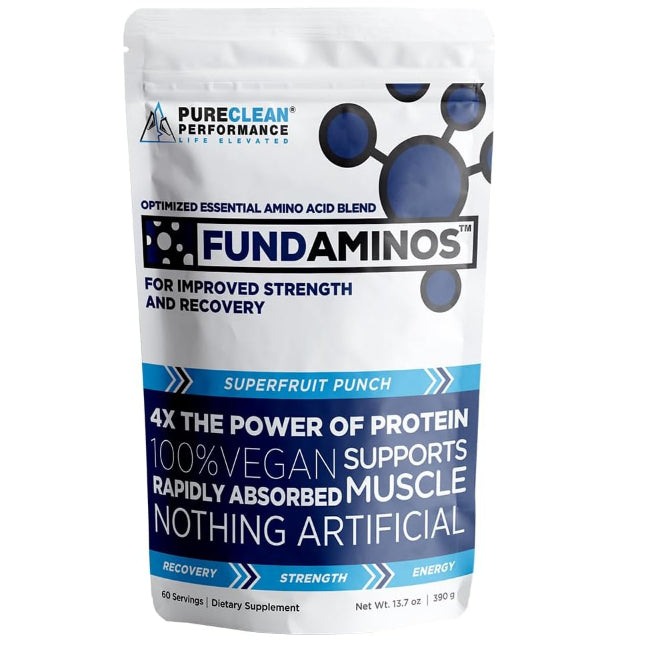
Fundaminos
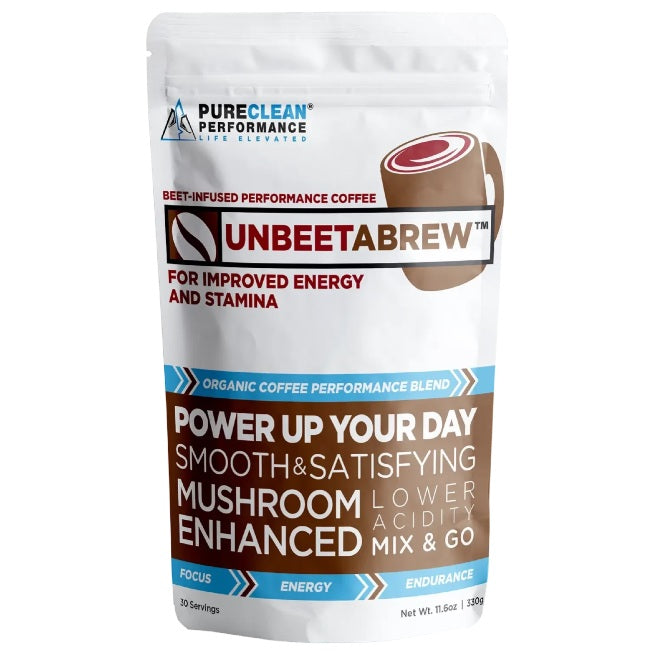
UnbeetaBrew
